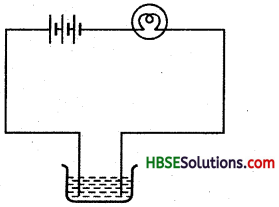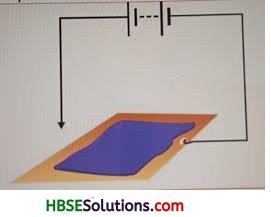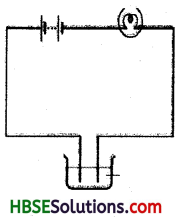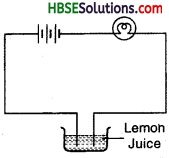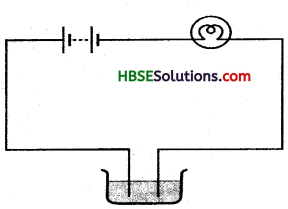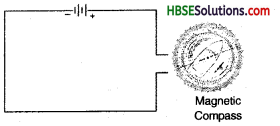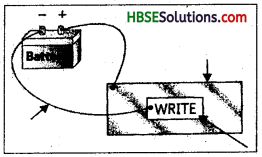HBSE 6th Class English Solutions Honeysuckle Poem 7 Vocation
Haryana State Board HBSE 6th Class English Solutions Honeysuckle Poem 7 Vocation Textbook Exercise Questions and Answers.
Haryana Board 6th Class English Solutions Honeysuckle Poem 7 Vocation
HBSE 6th Class English Vocation Textbook Questions and Answers
Question 1.
Your partner and you may now be able to answer these questions.
(i) Who is the speaker in the poem?
Who are the people the speaker meets? What are they doing?
Answer:
Rabindranath Tagore is the speaker in the poem as a school going child. He meets a hawker, a gardener and a night watchman. The hawker is selling his bangles. The gardener is digging the ground. The night watchman walks up and down the street. He is guarding the dark and lonely street.
(ii) What wishes does the child in the poem make?
Why does the child want to be a hawker, a gardener, or a watchman?
Pick out the lines in each stanza, which tell us this.
Answer:
The child wishes to be a hawker, a gardener or a watchman.
The hawker can go anywhere at any time. He is not bound to go at any place at a certain time. He can return home at will. The child wants to be a hawker.
The garuener does whatever he likes with his spade. Nobody can punish him for his dusty clothes. He suffers the strokes of sun and shower as long as he desires. The child wishes to be a gardener who works unchecked.
The watchman walks freely up and down the dark and lonely lane. His shadow alone is his companion. He is the master of his own self. The child wishes to enjoy life freely like a watchman.
(iii) From the way the child envies the hawker, the gardener and the watchman, we can guess that there are many things the child has to do, or must not do.
Make a list of the “do’s and don’ts” that the child doesn’t like. The first line is done for you.
The child must The child must not
Come home at a get his clothes dirty in
fixed time the dust
_______ _______
_______ _______
_______ _______
_______ _______
_______ _______
_______ _______
_______ _______
Answer:
The child must The child must not
come home at a get his clothes dirty in fixed time the dust (go to school at a be late for school, fixed time hurry on miss his route take a particular road be late for home avoid sun and shower do what he likes Now add to the list your own complaints about the things you have to do, or must not do.
I must
get up early every morning, take a regular bath.
Catch the school bus in time, stay in school full time.
I must not
disobey my parents, break the school discipline, shirk my home work, disturb the other students.
(iv) Like the child in the poem, you perhaps have your own wishes for yourself. Talk to your friend, using “I wish I were”….
Answer:
I wish I were
Different people have different ambitions. I wish I were a doctor. I do not aim at earning more and more money. My sole aim is to serve the poor and helpless people. I shall charge nominal fees from poor people especially widows and the aged. I shall take pleasure in removing the pains and troubles of the patients. I would work in a village. I shall spend my life in serving the suffering humanity. It will also prove to be a source of my living.
HBSE 6th Class English Vocation Important Questions and Answers
Question 1.
Write a few lines on ‘The Policeman’.
Answer:
The policeman is a useful public servant. He catches bad characters. He maintains law and order in his area. He guards our life and property. He patrols the streets. He clears the traffic jams. They are always with us and for us.
Question 2.
Write a few lines on ‘The Farmer’.
Answer:
A farmer grows crops in his fields. He sows seeds and waters his fields. He weeds out wild grass from his fields. He works hard all the year. He is the backbone of the nation. He leads an honest and simple life. He produces grains for us.
![]()
Question 3.
Write a few lines on ‘The Coolie’.
Answer:
A coolie works in the railway station.
He carries the luggage in and out of the railway station. He wears a red shirt and white trousers, He puts a brass badge on his left arm. It bears his licence number. He arranges good seats for those who pay him extra money. He knows no holiday. He works like a beast of burden.
Question 4.
Write a few lines on ‘The Barber’.
Answer:
The old barbers carry a small tin box which contains the implements of his trade. He goes from door to door to shave the people. The new barbers run their own saloons. He cuts the hair with his machine, comb and scissors. Old barbers are good informers and messengers.
Question 5.
Write a few lines on ‘The Juggler’.
Answer:
The juggler carries a fat bag on his shoulder. It contains many magic items. Sometimes he is accompanied by a couple of monkeys. He shows his tricks. His basket tricks are most surprising. The spectators fail to understand his tricks. They offer him money when he starts begging.
Question 6.
Write a few lines on ‘The Beggar’.
Answer:
Some beggars go begging from door to door. Others sit on the road sides, outside temples and busy places. They are an object of pity. They wear rags and even bandages soaked with blood. Their pitiable cries rouse pity in the people. They throw coins in their begging bowls.
Question 7.
What is common between the hawker, watchman and gardener?
Answer:
The hawker, watchman and the gardener are all workers performing vocational tasks as they like or want to. They perform their tasks freely. There is no one to guide them or instruct them on how to perform their tasks.
Question 8.
Can you guess the period in which Rabindranath Tagore might have written the poem? Why do you think so?
Answer:
Rabindranath Tagore might have written poem in the period when British Raj ruled it and they were not free. Through the words of a small child he is spreading the message of the desire of freedom between the common masses. After seeing each dutiful work he wants to perform his tasks freely and hot under anyone’s control. He wants to be carefree.
Question 9.
Illustrate the scene in which the watchman walks.
Answer:
The watchman walks up and down in a dark and lonely lane in a street with the street lamp which looks like a giant with one red eye.
![]()
Vocation Poem Stanzas for Comprehension
Question 1.
When the gong sounds ten in the morning and I walk to school by our lane,
Everyday I meet the hawker crying, “Bangles, crystal bangles!”
There is nothing to hurry him on, there is no road he must take, no place he must go to, no time when he must come home.
I wish I were a hawker, spending my day in the road,
crying, “Bangles, crystal bangles !”
Questions :
(i) Who is the speaker of these lines?
(ii) When does he walk to school?
(iii) Whom does he meet everyday?
(iv) What does the hawker sell?
(v) How is the hawker a free man?
Answers:
(i) The child Tagore is the speaker of these lines.
(ii) He walks to school at 10′ O’clock in the morning.
(iii) He meets a hawker everyday.
(iv) The hawker sells bangles.
(v) The hawker is a free man because he is not bound to be any where at a particular time.
Question 2.
When at four O’clock in the afternoon, I come back from the school,
I can see through the gate of that house
the gardener digging the ground.
He does what he likes with his spade, he soils his clothes with dust, nobody takes him to task if he gets baked in the sun or gets wet. I wish I were a gardener digging away at the garden with nobody to stop me from digging.
Questions :
(i) When does the child return from school?
(ii) Whom can he see through the gate of a house?
(iii) What is the gardener doing?
(iv) How does he soil his clothes?
(v) Why does he get baked?
Answers:
(i) The child returns from school at four O’clock in the afternoon.
(ii) He can see a gardener through the gate of a house.
(iii) The gardener is digging the ground.
(iv) He soils his clothes while he digs the ground.
(v) He gets baked because he has to work in the scorching sun.
Question 3.
Just as it gets dark in the evening and my mother sends me to bed,
I can see through my open window the
watchman walking up and
down
The lane is dark and lonely, and the
street-lamp stands like a giant with one red eye in its head.
The watchman swings his lanterns and walks with his shadow at his side,
and never once goes to bed in his life.
Questions :
(i) When does the child go to bed?
(ii) What does he see through the open window?
(iii) Where does he walk up and down?
(iv) How does the street lamp stand?
(v) Who gives company to the watchman?
Answers:
(i) The child goes to bed as soon as it is dark in the evening.
(ii) He sees the night watchman through the open window.
(iii) He walks up and down the dark and lonely lane.
(iv) The street lamp stands like a one/eyed giant.
(v) The watchman’s shadow alone gives him company.
![]()
Vocation Poem Translation in Hindi
When the …………… crystal bangles !”
जब प्रातः दस बजे का घंटा बजता है उस समय मैं अपनी गली से स्कूल जा रहा होता हूँ, तो
मैं प्रतिदिन, “चूड़ियाँ, पारदर्शी चूड़ियाँ!” चिल्लाते हुए एक फेरी वाले से मिलता हूँ।
जल्दी नाम की कोई बात उसमें नहीं होती है, उसे जरूरी तौर पर किसी सड़क पर नहीं जाना पड़ता है, उसके ऊपर किसी विशेष स्थान पर जाने की बंदिश नहीं है और किसी निर्धारित समय पर घर पहुँचने का उसके लिए कोई बंधन नहीं है।
मेरी इच्छा है कि मैं भी एक फेरीवाला बन जाऊँ और सारा दिन सड़क के ऊपर “चूड़ियाँ, पारदर्शी चूड़ियाँ” चिल्लाता हुआ गुजारूँ।
Word-Meanings : Gong-metallic bell, घंटा। Lane-a narrow street, तंग गली। Hawker-pedlar, फेरीवाला। Crystal-transparent, पारदर्शी। Wishdesire, इच्छा करना।
When at four ………….. from digging जब दोपहर बाद चार बजे मैं अपने स्कूल से लौटता
हूँ तो मैं घर के गेट से माली को देखता हूँ कि वह मिट्टी खोद रहा होता है।
वह जो चाहता है अपने फावड्े से करता, वह रेत में अपने कपड़ों को धूमिल कर लेता है। उसे कोई दंडित नहीं कर सकता है।
बेशक वह धूप में झुलस जाए या (पानी से) तर हो जाए। मेरी इच्छा है कि मैं एक माली बन जाऊँ, बाग को खोदता
रहूँ और खोदने से मुझे कोई नहीं रोक पाए।
Word-Meanings : Through-by means of, from end to end, किसी माध्यम के द्वारा, के रास्ते से होकर।
Digging-excavating, खोदना। Ground-earth, भूमि। Spade-a shovel, a tool for digging ground, फावड़ा, कस्सी, कुदाली। Soils-spoils, makes dirty, गंदा करना। Takes to task-punishes, दंडित करना। Bakedscorched, झुलसना। Wet-drenched, पानी से तर होना।
Just as it …………… my lantern.
जब सायंकाल में अंधेरा होता है और मेरी मम्मी मुझे सोने के
लिए पलंग पर भेज देती हैं, तो खुली हुई खिड़की के बीच से मैं इधर-उधर टहलते हुए एक चौकीदार को देख सकता हूँ।
सुनसान अंधेरी संकीर्ण गली में गली का लैंप अपने माथे के ऊपर एक लाल आँखवाला दानव की तरह खड़ा है।
चौकीदार, अपनी लालटेन को हिलाता हुआ अपनी परछाई के साथ-साथ टहलता रहता है।
और अपने समूचे जीवन में कभी भी (पलंग पर) नहीं लेटता है।
मेरी इच्छा है में गली में टहलने वाले उस चौकीदार की तरह बन जाऊँ और अपनी लालटेन से अपनी परछाई का पीछा करूँ।
Word-Meanings : Watchman-night-guard, पहरेदार, चौकीदार। Giant-a very tall and sturdy person, दानव। Swings-rocks in an irregular manner, हिलाता है। Shadow-reflection, परछाई। Chasing-pursuing, going behind, पीछा करना।’
Vocation Poem Summary in English
The child goes to school at ten every morning. He sees a hawker who sells bangles. The hawker is free to go at any place any time. He can return home any time. The child returns from school at four in the afternoon. He sees a gardener working with a spade. His clothes are spoiled. Nobody can stop him from working. The child sees a watchman walking up and down the dark and lonely lane at night. His lantern is his only companion. The child also wishes to be free like them all.
Vocation Poem Summary in Hindi
बच्चा, प्रतिदिन प्रातः दस बजे स्कूल जाता है। वह किसी फेरी वाले को देखता है, जो चूड़याँ बेचता है। फेरी वाला किसी समय भी कहीं पर भी जाने के लिए स्वतंत्र है। वह कभी भी घर लौट सकता है।
बच्चा, स्कूल से दोपहर बाद चार बजे लौटता है। वह फावड़े से काम करते हुए एक माली को देखता है। उसके कपड़े गंदे हो गए हैं। उसे कोई भी, काम करने से नहीं रोक सकता है।
बच्चा रात को अंधेरी और अकेली गली में इधर-उधर घूमते हुए एक चौकीदार को देखता है। उस की लालटेन ही उसकी एक मात्र संगी है।
बच्चा भी, उन सभी की तरह स्वच्छंद होना चाहता है।
HBSE 6th Class English Solutions Honeysuckle Poem 7 Vocation Read More »
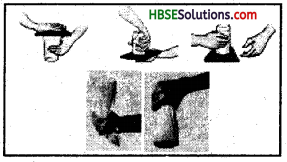
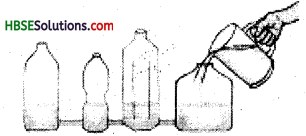
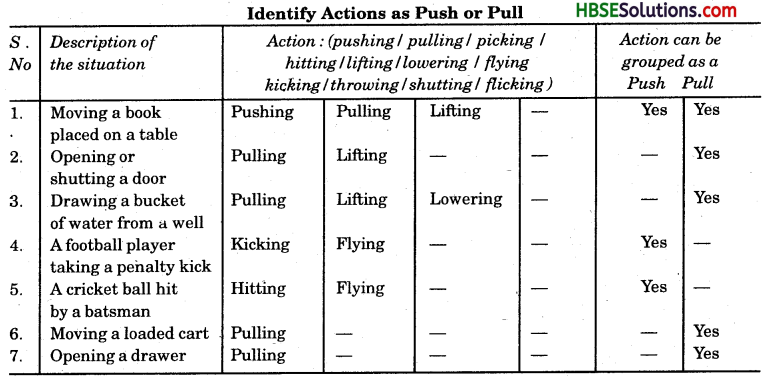
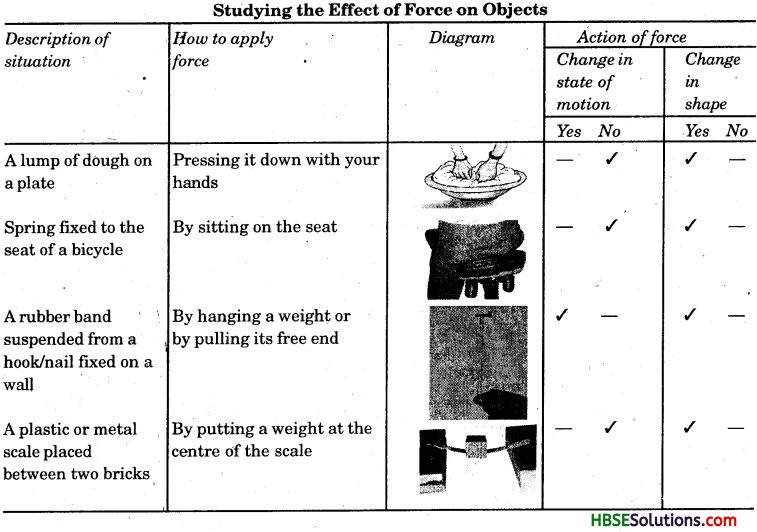
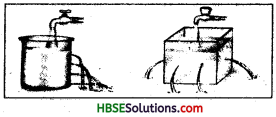
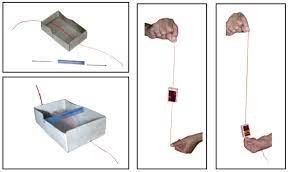
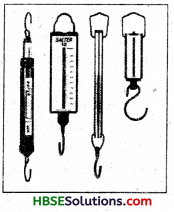
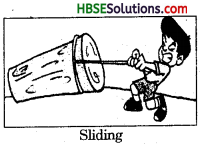
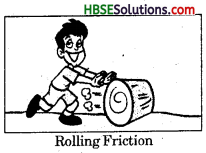
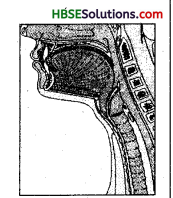
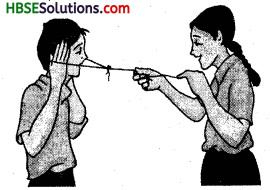
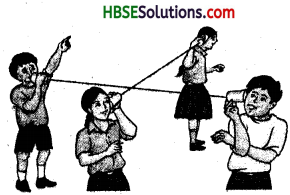
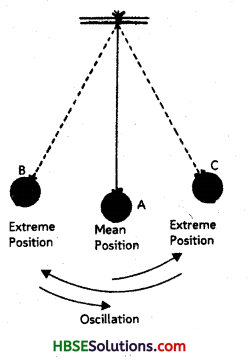
 Sound reaches from one source to another. It travels from one point to another through some medium. Sound waves can travel through air, liquid and even through solids. What we hear one another, that sound travels through air medium. But we can bear some body talking in next room too, that means sound waves have crossed wall to reach us. Dolphins and whales communicate in water.
Sound reaches from one source to another. It travels from one point to another through some medium. Sound waves can travel through air, liquid and even through solids. What we hear one another, that sound travels through air medium. But we can bear some body talking in next room too, that means sound waves have crossed wall to reach us. Dolphins and whales communicate in water.
